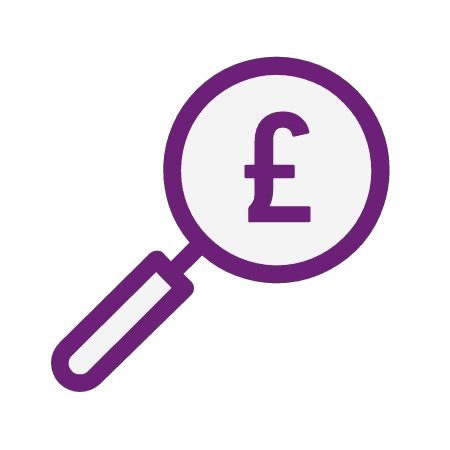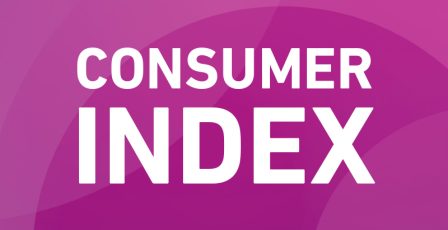The trade credit conundrum
How trade creditors can overcome their most pressing challenges
Though inflationary pressures are reducing, the stubbornly high cost of borrowing is squeezing trade customers. Data suggests businesses are increasingly choosing lower-stakes options like revolving credit. For business owners with less predictable streams of work, it’s viewed as an affordable and convenient way for businesses to protect their cash flow and access essential components.
Offering trade credit can make businesses more competitive, helping them win new business and build a loyal customer base. It’s particularly attractive to trade customers who utilise revolving credit to protect cash flow. They’re likely to purchase parts or materials for jobs on credit and settle their supplier balance once they’ve received payment for their work. However, offering credit carries risk and we are seeing an increase in the number of trade credit customers asking for extended terms beyond the common 30 days.
It can be difficult for businesses to get their trade credit offering right. If they’re too lenient, they put themselves at risk of accruing bad debt from failing companies. But being too stringent can be a costly, time-consuming endeavour that restricts growth – and something many smaller businesses do not have the resources for.
With business insolvencies up 27% year-on-year[1] between June 2022 and 2023, but the advantages of offering trade credit undeniable, creditors face a challenge. How can they discern which customers are candidates for credit without driving up bad debt and negatively impacting their Days Sales Outstanding (DSO) metric?
We surveyed a selection of businesses to find out more about the key opportunities and challenges offering lines of trade credit can bring. Having access to dynamic credit data and cost-effective solutions that make it easy to automate credit checking could be the answer.
Managing robust credit assessments
Creditors are juggling lots of worries right now, ranging from economic uncertainty to the burden of portfolio management. Those we surveyed cited concerns such as slow or non-paying customers’ impact on their profits, while others felt they were being held back by the need to modernise and automate their trade credit processes.
Customer creditworthiness is the most important consideration of successful trade credit schemes – but even more so in an uncertain economic climate. Unsurprisingly:

95% of our respondents said they use credit reference agencies to vet potential debtors
![]()
40% also said they review their portfolio to identify any emerging risks with existing customers on a monthly basis
Even though this regular monitoring is important during economic turbulence, it’s likely to be a significant administrative burden. It is often a manual process and relies on the credit controllers reviewing lines of credit without having the benefit of external data sources.
Another issue businesses run into is the cost of carrying out robust credit checks. Lack of automation leads to inconsistencies across controllers or branches. Without a partner on their side, finding and creating a bespoke credit vetting process can be costly and time consuming – particularly if they lack the internal capabilities to automate the process.
When assessing which credit agencies to work with, it’s important that businesses also look beyond the headline data. Although all respondents make use of credit checking services, far fewer utilise valuable tools such as market analysis and identity checking services. And for those who are struggling to collect debts from relationships that have soured, credit agencies can even make recovery action easier.
Making collections more effective and less time consuming
The challenging economic market is putting more pressure on both creditors and debtors – but how are the former protecting themselves against losses? Our survey showed that 45% had credit insurance policies, which can protect them from losses if debtors don’t pay up. But in the wider market, just 2% of UK SMEs held trade credit insurance in 2022[2] – suggesting it’s not commonly utilised as a bad-debt protection tool.
Implementing an effective dispute management process and collections strategy can be difficult. We discovered that over half of respondents cited incorrect or outdated data as a key challenge within their dunning processes. Struggling to access correct debtor information is making it harder to creditors to initiate action to recoup what they’re owed.
Another big problem for creditors in their general collections approach is deciding which debtors to prioritise. For larger organisations, they may have several insolvent or failing debtors and poor data to support collections action against any of them. Even if the information is available, manually sorting through data and finding a point of contact for debtors is yet another labour-intensive and time-consuming process.
Utilising debt recovery tools from a provider like Experian can help businesses effectively approach debt prioritisation and collection. Options like our Debt Prioritisation Service automate data processing and our extensive and reliable data improves the likelihood of tracing debts to begin collections action.
Using automation to become more efficient
Achieving a streamlined and manageable Order-to-Cash (O2C) flow is a universal goal for businesses. Those we spoke to cited competing priorities and struggling with a lack of time, or even the cost, as factors that were stopping them improving their O2C processes. It’s unsurprising, then, that processes like customer onboarding and payment allocations would be prioritised if companies utilised automation.

A survey by The Hackett Group found that organisations are generally more successful at automating simple processes, such as cash application and order management. There are lots of existing software solutions that are easy to implement and cost-effective – explaining why…
- 72% of businesses have managed to automate many of their customer billing tasks, with just 28% saying these processes are minimally automated.
Where businesses struggle, and the survey found far lower levels of automation, was in “judgement-based processes”. Complex tasks that are essential to a seamless O2C process, including credit risk scoring and modelling or dispute resolution, are trickier to automate…
- 60% of businesses reported a minimal amount of automation in their credit processes, with just 24% even achieving a moderate level of process automation.
So how can automation make credit risk scoring an easier process? It could, for example, screen trade credit applicants and flag those against certain risk criteria – allowing you to automatically onboard customers that are low risk, and manually review marginal cases. Given you automate the low-risk customers, you can spend more time on the marginal cases, making it easier to get the decision right.
Partnering with Experian opens tools that can automate the most complex and time-consuming parts of credit checking. Our APIs include valuable data that can be easily integrated into your existing system.
Furthermore, our Commercial Delphi Generation 6 provides the most predictive commercial credit checking score Experian has ever offered. It’s a powerful score that gives you detailed insight, including the use of current account turnover data and payment details*, to help you more accurately assess who you offer credit to.
Commercial Delphi Generation 6 is more responsive to failing businesses when compared with traditional markers of risk like CCJs. It unlocks data that reveals a potential debtor’s poor financial health months before the actual judgement is handed down. Sharing your data with Experian gives you access to information that better protects your business against bad debt.
Finding the right tools
Whether you’re a business owner or manage financial processes, it can be hard to come up with an effective strategy for your trade credit offering. So, what’s the answer to building trade credit processes that are rigorous, cost-effective and easy to sustain?
It’s tempting to go for outsourced options like Buy Now Pay Later (BNPL), which allow you to offer credit through an external provider like Klarna. It is a popular route in the consumer market, where 46% of top retailers offer BNPL[3]. Commercial BNPL, however, is nowhere near as matured as a market compared with consumer BNPL and therefore not really a viable option anyway at the moment.
*Use of CATO and summarised Commercial CAIS data included in Commercial Delphi Generation 6 where clients share Payment Performance data with Experian.
Partner with Experian
At Experian, we can work with your marketing and sales teams to help target low risk, prompt paying prospects. We’ll help you better understand your market and support you to scale your credit function to meet customer demand. Using our products, you can create a customised credit solution at a lower initial cost than entirely bespoke options, and quickly integrate it into your organisation.
Our solutions can remove time-consuming and inefficient manual processes and free up your team to focus on work that requires human intervention. We’ll also ensure you’re better informed when assessing your customers’ credit limits, offering you stronger protection against bad debt and giving you more confidence in what you offer to solvent customers.
We offer a range of tools from our Commercial Bureau, including APIs and Commercial Delphi Generation 6, which helps you more accurately assess risk, and Commercial CAIS, where you can access data on more than 18 million commercial accounts. With extensive and reliable data at your fingertips, you’ll be able to spot early warning signs and lend to customers with confidence – all while reducing manual workloads.
Commercial Delphi Generation 6
The fundamental credit risk engine score, more inclusive and with more predictive power than ever
Let's go









